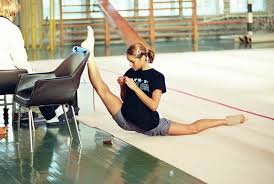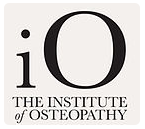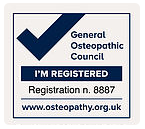 Osteopathy and recurring hamstring strain prevention
Osteopathy and recurring hamstring strain prevention
Introduction
The prevalence of hamstring strains amongst people who play sports that involves running and or jumping is high. Also once a hamstring strain has occurred the risk that it will happen again is much higher.
Research (Sherry MA , Best TM et al 2011) has confirmed what osteopaths have long understood that the angle of the pelvis and trunk strength often play an integral role in the strength of the hamstring and the prevalence of repeated strains in sportsmen and women.
Osteopathic treatment to realign the pelvis combined with therapeutic exercise to increase core stability and hamstring strength is a very effective way of addressing this.
I am going to share a recent case which illustrates how an osteopathic approach helped an amateur runner break the cycle of recurring hamstring strain.
Case History of recurring hamstring strain
A female amateur athletics 1500m runner in her early 30s pesented with a recurring painful left hamstring. There are different grades of strain from 1-3 with 3 being a significant tear of the muscle fibres (up to 90%) and 1 being a minor tear (5-10% of fibres). She had a grade 1 tear.
The patient said that each time she would rest it for 4 week period using ice at the start in the acute phase and then static stretches followed by strengthening exercises in rehab phases of the injury. She would then start training again and it would recur within 2-4 weeks.
Whilst the diagnosis of what was causing the patients pain was a grade 1 tear of her left biceps femoris (hamstring) the underlying cause of the repetition lay elsewhere.
On further examination the patient’s left hamstring was under noticeably more tension on palpation whilst the muscle bulk was slightly less than the right. Osteopaths use their hands and finger pads to really feel the skin, fascia and muscles tension differences. They are one of our most useful tools in diagnosis.
And the anterior (front) aspect of the left side of her pelvis was slightly rotated forward leading to a slightly longer left leg. Her left foot was pronated too.
What does this mean?
This slight rotation can be caused by poor core strength of the trunk muscles and tight hip flexors such as psoas, iliacus and rectus femoris. Not only do these big powerful muscles increase lordosis – your curvature of your lower back- but they can cause your pelvis to rotate slightly.
What does this do to your hamstring?
Your hamstring originates and attaches to the bottom of the pelvis behind your sitting bones (ischium). With the pelvis rotated slightly forward the sitting bones move upwards and in effect stretches the hamstring making it longer. It is then under more tension and prone to tears and strains.
Pronated Left foot
In essence the pronation can be as much part of the problem and needs to be addressed as much as the pelvic asymmetry. The over-pronation (flat feet) that some people have causes an internal rotation of the leg and hip and the pelvis to tilt
The osteopathic treatment
We worked with the patient to return her rotated pelvis to a balanced symmetrical state through a combination of manipulation and METs. Her tight hip flexors were made more flexible through traditional manual therapy techniques and healing of the muscle strain was encouraged by improving circulation and myofascial techniques.
She was then given a series of therapeutic exercises to improve hip flexor flexibility and core trunk stability, proprioception.
We advised her on her over-pronation and to look at either orthotics to provide arch support and to look at using a running shoe that provides more stability and reduces over-pronation. We also improved foot joint articulation and improve circulation to the muscles that attach to the arch of the foot- the dorsi-flexors and inverters.
The results
The amateur athlete has been pain free for the last 6 months.





